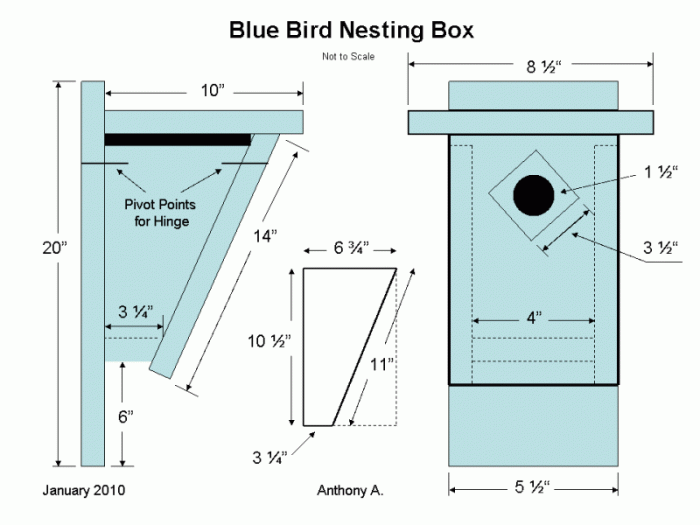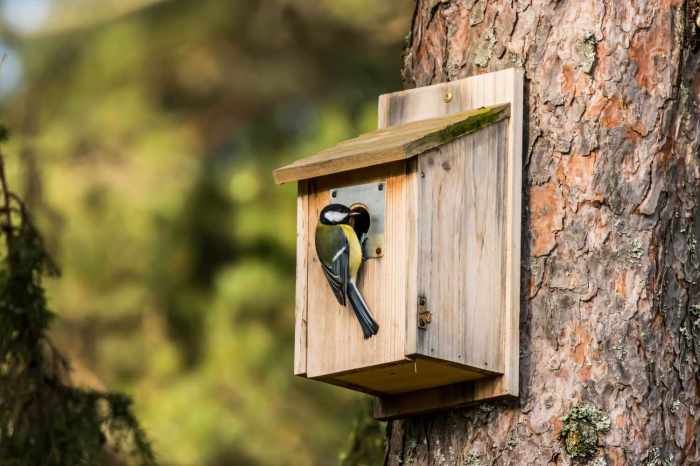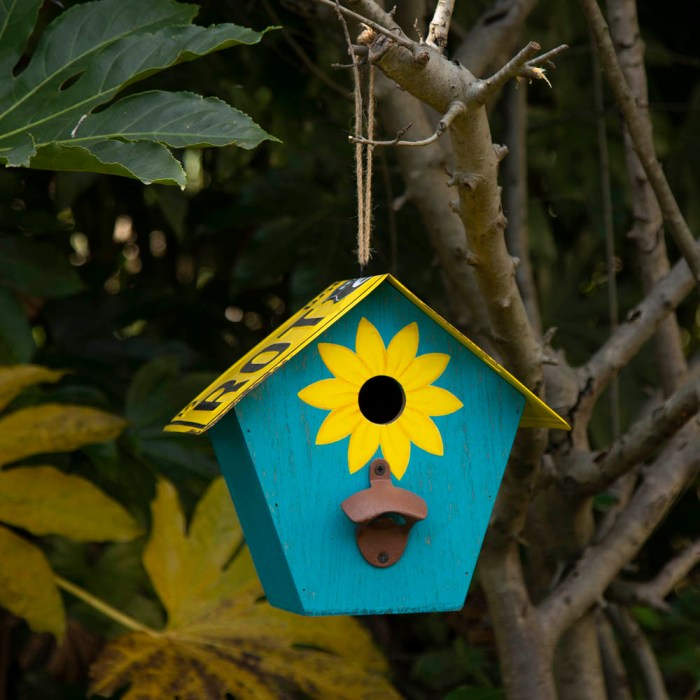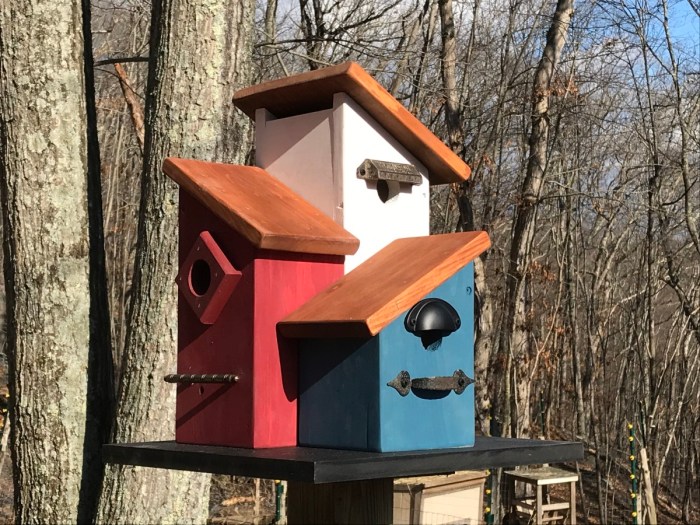Embark on the journey of crafting a bird sanctuary with ‘How to Build a Birdhouse: 10 Steps to Creating a Safe Haven for Birds’, as we delve into the art of birdhouse construction with precision and care.
Explore the intricate details of material selection, design considerations, and construction steps that culminate in a safe abode for our feathered friends.
Materials Needed

Building a birdhouse requires a few essential materials to ensure a safe and comfortable habitat for our feathered friends. Each material serves a specific purpose in creating a sturdy and secure structure that promotes bird nesting and shelter.
Wood
- Wood is the primary material needed for constructing a birdhouse. It should be untreated and of a thickness that provides insulation and protection from the elements.
- Opt for durable and weather-resistant wood like cedar or redwood, as they are long-lasting and safe for birds.
- Wood can be sourced from local hardware stores, lumberyards, or even recycled from old furniture or pallets.
Nails and Screws
- Nails and screws are essential for joining the wooden pieces together securely. They ensure the birdhouse remains intact and stable.
- Use galvanized or stainless steel nails and screws to prevent rusting, which can be harmful to birds.
- These fasteners are readily available at hardware stores in various sizes to suit your construction needs.
Wood Glue
- Wood glue is used in addition to nails and screws to reinforce the joints and make the birdhouse more durable.
- Choose a non-toxic and waterproof wood glue to ensure the safety of the birds inhabiting the house.
- Wood glue can be purchased from hardware stores or online retailers specializing in woodworking supplies.
Design and Planning

When it comes to building a birdhouse, choosing the right design is crucial for attracting specific bird species and ensuring their safety and comfort. The design of the birdhouse will determine which birds will be attracted to it, so it is essential to consider the needs and preferences of the birds in your area.
One of the main factors to consider when selecting a birdhouse design is the entrance hole size. Different bird species have different preferences for entrance hole sizes, so it is important to research the specific birds you want to attract and choose a design that meets their requirements. For example, a smaller entrance hole may attract chickadees or wrens, while a larger hole may be suitable for bluebirds or woodpeckers.
Another important aspect of birdhouse design is the dimensions and features of the birdhouse. The size of the birdhouse should be appropriate for the bird species you are targeting, with enough space inside for nesting materials and eggs. Additionally, features such as ventilation holes, drainage, and predator guards can help ensure the safety and well-being of the birds that will call the birdhouse home.
Examples of Birdhouse Designs
- A-frame birdhouse: Suitable for smaller bird species like chickadees and wrens, with a sloped roof to shed water.
- Pole-mounted birdhouse: Ideal for bluebirds, with a predator guard to prevent access by climbing predators.
- Multi-level birdhouse: Great for purple martins, with multiple compartments for nesting and socializing.
Construction Steps

Building a birdhouse requires careful attention to detail and safety. Here are the step-by-step instructions for constructing a birdhouse and tips for handling tools safely.
Gathering Materials
- Begin by gathering all the necessary materials, including wood, screws, nails, a hammer, a saw, and a drill.
- Make sure to wear safety goggles and gloves to protect yourself during the construction process.
Cutting the Wood
- Measure and cut the wood pieces according to the design plan you created earlier.
- Use a saw to carefully cut the pieces to the correct dimensions, following the measurements precisely.
Assembling the Birdhouse
- Start by assembling the sides, base, and roof of the birdhouse using screws or nails.
- Make sure the pieces are securely fastened together to create a sturdy structure.
Drilling the Entry Hole
- Use a drill to create an entry hole for the birds. Refer to your design plan for the appropriate size and placement of the hole.
- Be careful when using the drill and follow all safety precautions to avoid accidents.
Adding Finishing Touches
- Sand down any rough edges to create a smooth surface for the birds to perch on.
- Apply a non-toxic sealant or paint to protect the wood from the elements and provide a decorative touch.
Installing the Birdhouse
- Choose a bird-friendly location for your birdhouse, away from predators and in an area with easy access for the birds.
- Securely attach the birdhouse to a tree, pole, or building using screws or brackets to ensure it stays in place.
Last Point

Concluding our birdhouse-building expedition, we’ve learned how each step contributes to the safety and comfort of birds. Let’s continue to nurture nature and create havens for our avian companions.